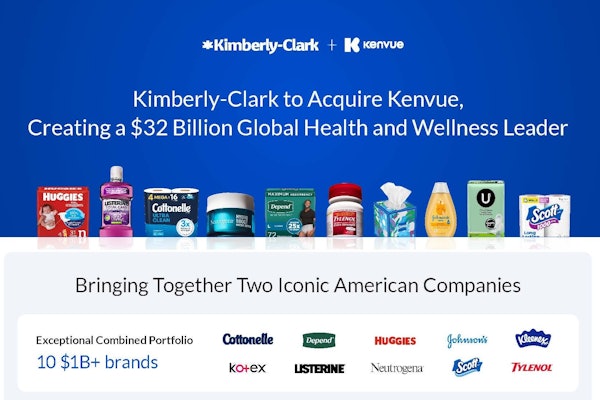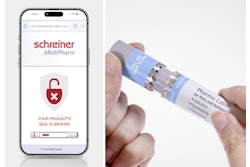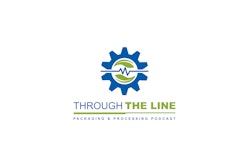
What are some of trends and issues to look for in the healthcare packaging community in 2014? Healthcare Packaging reached out to West Pharmaceutical Services, Inc. for some perspective. Responding in this article are Fran DeGrazio, Vice President, Global Research and Development, and Graham Reynolds, Vice President, Marketing and Innovation.
Graham Reynolds
• Adding value to existing medication through delivery devices: With the increasing challenges from new drugs with applications to existing conditions, there will be an increasing emphasis from pharmaceutical and biopharmaceutical companies to add value to existing medications. Differentiation can be achieved through novel devices or altering the method of administration, or by providing support and compliance tools to patients. Pharmaceutical manufacturers will need to think beyond the drug product itself to the various aspects of delivery and administration that bring value to the patient. Patient compliance to chronic therapies is remarkably low, leading to lost revenue, higher healthcare costs, and the risk that patient conditions are not effectively managed. Finding ways to improve adherence will become increasingly important. Improved devices and delivery systems, better education, and the use of systems and technologies to help and encourage patients to be compliant will be key.
• Higher dose volume: There is a general trend toward higher-dose-volume delivery, which we see in many areas of new biologic products, as well as the opportunity to reduce dose frequency from existing products by increasing the dose volume. The trend to facilitate that through products such as the SmartDose® electronic patch injector technology platform and other advanced delivery and administration systems will be important. The main drivers relate to the fact that many newer biologics require higher concentrations for an effective dose, leading to higher viscosity and/or higher dose volume. The opportunity to reduce injection discomfort and improve adherence through less frequent, higher-volume doses offers the potential for significant benefits to the patient and the provider. This trend also creates the need for a more customizable packaging system, and is driving some of the development of polymer systems, which offer increased design flexibility and precision when compared to glass containers.
• Biosimilars: There are many indications of a significant trend toward biosimilars in the coming years. With many major biopharmaceutical companies facing patent expiration for high-value drugs (such as Enbrel®, Humira®, Remicade®, and many others), their priorities are to protect their franchises in many different ways. Biosimilar companies are actively pursuing competitive offerings, and are setting their sights on this lucrative market. Providing offerings that expand access to these therapies, as well as enhancing the overall patient experience, will be a priority. There is a need for value-added systems both from the innovator to protect their franchise and from the biosimilar manufacturer seeking to enter a competitive market.
• Understanding the patient journey: There will be increasing focus on patients suffering from chronic conditions from the point of view of understanding the many phases of his or her journey through the lifecycle of therapies—from initial diagnosis and early acclimation to getting comfortable and adherence based on quality of life. Companies must recognize that patients at different stages on this journey may require different solutions, whether those solutions are device or support-related.
Pharmaceutical companies must understand that as patients evolve through the phases of a chronic condition, they may need different options for care. For instance, insulin therapy offers a variety of delivery options that involve needle, pen, or pump that can be used based on competency, quality of life, or compliance requirements. Such options offer the ability for clinicians to provide different solutions depending on a patient’s stage in the lifecycle. There is a corresponding need for device companies to create systems that are appropriate at various life stages, so we will also see a trend toward novel devices and options for patients at different points in their care.
Fran DeGrazio
• Emerging markets: We will see greater activity in emerging market regions including South America, China, India, and Asia in general. As companies recognize that there is a large opportunity for pharmaceuticals in those areas, they will be looking for suppliers that can deliver appropriate products in the various regions.
• Increasing regulatory and quality concerns: In general, for developed markets, we will see much stronger regulatory and quality needs. Regulatory agencies are asking customers to understand the supply chain for their products and not just the last piece—the point of purchase. This is being done for two reasons: first, from a risk mitigation standpoint, such an understanding will help to minimize any problems that might occur in the supply chain that could then lead to a potential drug shortage. Second, there is a need to understand the supply chain and ensure that it is under control from a quality standpoint. That will help minimize issues of contamination or adulteration. So we will continue to see more and more activity in those areas.
• Zero-defect mentality: The zero-defect mentality continues to gain traction and is growing more intense. Suppliers need to work with the industry to understand and quantify what is needed in new products. One of the biggest challenges customers have is that they are purchasing what would be considered a “legacy” container closure system, which means they are purchasing something that they may have used for the past 20 years. Placing 2014 industry standards on these products creates a challenge for both industry and the supplier. Component manufacturers must help customers transition into an appropriate product for a successful drug that may have been in the market place for years while minimizing their regulatory burden.
• Increases in cartridge-based delivery systems: There has been a definite trend toward prefilled syringe systems, but more recently we’re seeing an interest in cartridge systems, too. Many pharmaceutical manufacturers are packaging their drug products with delivery devices, and cartridges offer options for those systems. Historically, cartridges have been used in pen systems for products such as insulin or for dental applications. There was not a lot of activity for cartridges for biotechnology drug products. However, with the advent of new delivery systems and their capabilities, not to mention the advent of new biologics, those combinations will now allow for cartridge-based systems that are capable of delivering a drug product over a longer period of time.
SmartDose® is a registered trademark of Medimop Medical Projects Ltd., a subsidiary of West Pharmaceutical Services, Inc. West seeks partners for its SmartDose® injector technology platform. This platform is intended to be used as an integrated system with drug filling and final assembly completed by the pharmaceutical/biotechnology company.
Enbrel® is a registered trademark of Amgen, Inc.
Humira® is a registered trademark of AbbVie,Inc.
Remicade® is a registered trademark of Janssen Biotech, Inc.






















